Purpose
When learning about the utility network, it can be difficult to know where to start when faced with the volume of available content. This is further complicated by the fact that the audience trying to learn about the utility network is extremely diverse in terms of their technical expertise and goals, as well as their industries and objectives. The purpose of this article is to consolidate all the most relevant content for a particular industry into a single page that they can then refer to.
Each piece of content includes a title, description, type of content, and targeted experience level. This information will allow you to quickly identify content that is appropriate to your preferred learning style (video, article, etc.) and your current level of understanding of the utility network (beginner, intermediate, advanced). The levels used in this article are defined as follows:
- Beginner – This content is suitable for all readers and does not require previous experience with or understanding of the utility network.
- Intermediate – This content is beneficial to all readers but may be tailored toward specific roles in an organization. These articles build on the beginner-level content and may also contain concepts that build on other intermediate-level content.
- Advanced – This content is not suitable or necessary for all readers and requires a strong understanding of multiple intermediate-level articles. The concepts and may also require subject matter expertise in other topics like electrical networks or data migration.
While it is possible to read all the content listed in this article from top-to-bottom, most people will bookmark this page and revisit it as they need to focus on specific topics for meetings or workshops. Before reviewing this content, think about what you want to focus on learning so you can prioritize reviewing the topics and content that is most relevant to your current situation. If you’re new to the utility network, focus on the core concepts; if you are handling data cleanup, focus on familiarizing yourself with editing and topology; for analysis tasks, review the tracing and subnetworks sections.
You can use the links below to navigate directly to the chapter of this article that interests you the most. Each chapter is further divided into sections that focus on specific areas of interest within that topic.
- Core concepts
- Editing and topology
- Tracing and analysis
- Subnetworks
- Configuration
- Case studies and user stories
If you are interested in learning about data migration options, best practices, and data models, visit the ArcGIS Utility Network migration reading list.

Core concepts
This chapter describes the core concepts of the utility network and how it supports different industry workflows. This includes an overview of its capabilities, how it supports electric datasets, as well as how data in a utility network is organized.
This first tutorial shows some of the daily workflows for managing electric data using a utility network.
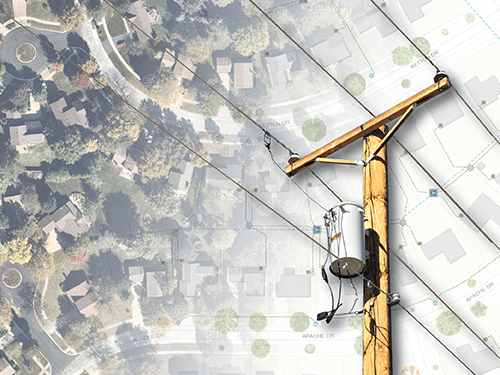 |
Title | Try ArcGIS Utility Network for electric utilities |
| Level | Beginner | |
| Type | Tutorial | |
| Description | Trace, analyze, and edit electric utility assets to locate outages and account for new service areas. |
Information model
An information model is the way that a system represents data, outside of any industry or business specific data model. The content in this section describes the information model and core concepts of a utility network. The first video is a video from the Esri User Conference that discusses this topic using a combination of slides and demonstrations.
| Title | ArcGIS Utility Network: An Overview | |
| Level | Beginner | |
| Type | Video | |
| Description | Learn about the fundamentals of the ArcGIS Utility Network and how you can use it to organize and understand your network datasets used to manage infrastructure. |
This article provides a high-level overview of the concepts behind the utility network.
 |
Title | Vision and overview of the utility network |
| Level | Beginner | |
| Type | Article | |
| Description | Learn Esri’s vision for the utility network and gain an overview of the functionality it brings to those working in the utility sector. |
The next article in this section describes the information model of the utility network and how it is designed to be flexible to support different industries.
 |
Title | Exploring the utility network – Domain and structure networks |
| Level | Beginner | |
| Type | Article | |
| Description | Explore the foundational components of domain and structure networks to understand how the Utility Network allows intelligent modeling of interrelated components in a utility system. |
Some electric models make use of a capability of the utility network called non-spatial objects to model certain types of equipment. You can read the following article to learn more about what non-spatial objects are.
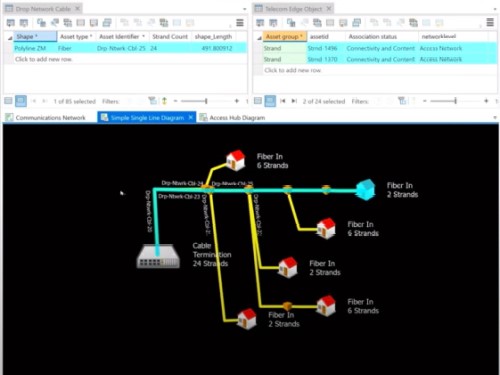 |
Title | Introducing Nonspatial Objects in the ArcGIS Utility Network |
| Level | Beginner | |
| Type | Article | |
| Description | This article explains what non-spatial objects are and how you can use them to model communications and underground structural networks. |
Customers that manage electric data often manage multiple datasets (distribution, bulk power, substations). One of the key benefits of the utility network is the ability to combine these different datasets into a single, connected network. However, before committing to this change there are some key requirements you should consider ensuring that you are making the right decision for your organization. This article will help walk you through some of the key points to consider when deciding which approach to take.
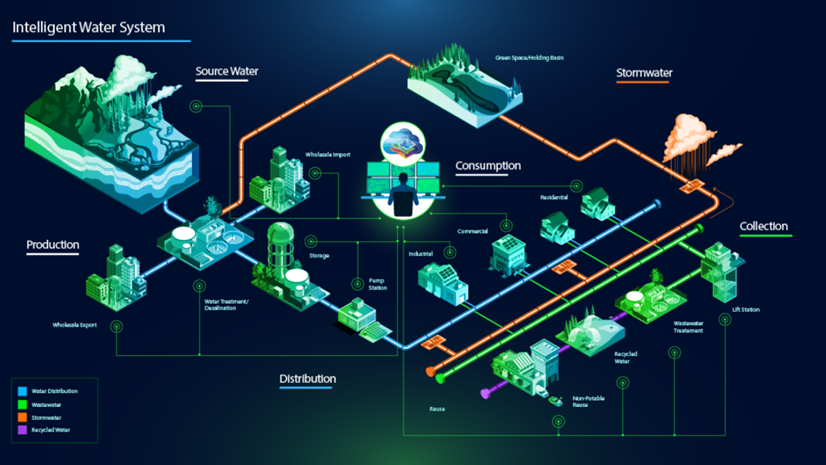 |
Title | How many utility networks does it take? |
| Level | Beginner | |
| Type | Article | |
| Description | Learn about the benefits and different approaches for modeling multiple utilities with ArcGIS Utility Network. |

Editing and topology
This section describes how data is edited, validated, and managed using a utility network. This includes descriptions of how to identify and resolve topology errors, along with how the network stores and uses network attributes.
This first tutorial shows you some of the tools and general workflows you may use while editing utility network data. Your actual workflows will vary slightly, depending on decisions you make during your project about how you want to manage the connectivity and relationships of your data.
 |
Title | Manage utility data using ArcGIS Utility Network |
| Level | Intermediate | |
| Type | Tutorial | |
| Description | Modify feature templates, create features, validate the network topology, and run a connected trace. |
This next article shows how the utility network uses dirty areas to track, validate, and report network errors. Familiarizing yourself with these concepts helps you understand the workflow associated with editing data and performing quality assurance.
 |
Title | Dirty area management with the ArcGIS Utility Network |
| Level | Beginner | |
| Type | Article | |
| Description | Learn about the importance of dirty areas in the network topology and gain insight into changes made with their management in ArcGIS Pro 2.5. |
Topology errors
This section continues with a series of tutorials and articles showing you how the network topology of a utility network validates edits. You’ll see different types of errors that the utility network can identify, and techniques you can use to resolve them. These tutorials and articles are all written using water data, but each tutorial is accompanied by an article that explains how to apply the concepts to electric data.
The first tutorial shows you the errors you are likely to encounter based on problems with how features are drawn and the most common resolutions to these issues. This includes stacking features, self-intersecting lines, and locations where devices cannot be drawn midspan on lines. These are important techniques to understand if you will be editing utility network data or working on data cleanup for a data migration.
 |
Title | Fix topology errors in a utility network |
| Level | Intermediate | |
| Type | Tutorial | |
| Description | Use the utility network to identify and resolve issues with the network topology. This includes edge-edge errors, stacked point errors, and midspan terminal device errors. |
This next tutorial shows you how the utility network evaluates the connectivity rules defined in your data model to identify locations with invalid connectivity, and the most common way to resolve those errors. Understanding how the network rules impact your editing experience and can both cause and resolve errors, is important for both editors and those involved in cleaning up utility network data.
 |
Title | Fix connectivity errors in a utility network |
| Level | Intermediate | |
| Type | Tutorial | |
| Description | Use the network rules in a utility network to identify and resolve junction-edge errors, ambiguous connectivity errors, and invalid terminal connection errors. |
This article shows examples of the most common types of topology and connectivity errors that electric customers encounter, and the most common approaches for resolving them. This is important information for those who are implementing or editing an electric utility network.
 |
Title | Managing Electric Networks: Topology Errors |
| Level | Intermediate | |
| Type | Article | |
| Description | This article will show you how to identify and resolve some of the most common topology errors in an Electric Utility Network. |
Error resolution
This section shows tools available to help customers get over the initial hurdle of topology errors when they implement. Getting an error-free network topology is an important part of any implementation, and there are tool tools to automate much of the analysis and act as a force multiplier for resolving errors. Before you consider automating any error resolutions make sure you have a strong understanding of the different approaches to resolving errors discussed in the related resource section of the Resolving topology errors article (below).
If you want a hands-on approach to tackling issues, you can follow the instructions in this tutorial to learn how to use the Migration toolset to identify and resolve issues.
 |
Title | Analyzing and resolving topology errors |
| Level | Intermediate | |
| Type | Tutorial | |
| Description | Use the Migration toolset to identify topology errors and apply automated data corrections to your utility network data. |
The next article provides a high-level overview of the analyzing and resolving error process demonstrated in the tutorial above. This information is important for those who do data migrations or users who want to do a data assessment of their own data.
 |
Title | Analyzing Topology Errors |
| Level | Intermediate | |
| Type | Article | |
| Description | This article shows you how the new Migration toolset can help you analyze and resolve quality assurance issues you need to create a utility network. |
The next article shows examples of each type of error and examples of the most common types of actions you can apply using error resolutions using the tools included in the Migration toolset. This article also includes links to additional topics in the online help, tutorials, and industry-specific articles that provide specific examples of the different types of resolutions for each kind of error. This information is important for those who want to understand the results of an error analysis in order to resolve the errors, regardless of whether they plan on resolving them manually or using the automated tools.
 |
Title | Resolving Topology Errors |
| Level | Intermediate | |
| Type | Article | |
| Description | Learn how to use the Analyze Network Data and Apply Error Resolution tools to identify and resolve topology errors with your utility network data. |
Configuration
This chapter concludes with a tutorial and several articles discussing configuration changes you can make to your utility network.
The first tutorial shows you the most common examples of how the rules you have configured in your model affect the topology errors. This includes examples of under configuring, over configuring, and misconfiguring network rules. Even though this tutorial uses water network data, the concepts are still applicable to all industries. This is important information for editors, administrators, and those who build data models to understand.
 |
Title | Configure rules for a utility network |
| Level | Intermediate | |
| Type | Tutorial | |
| Description | Use a utility network to resolve topology errors by changing rules, terminal configurations, and edge connectivity. |
This article shows how you can use the Migration Toolset to make adjustments to the network rules in your model. This includes a process for calculating a new set of network rules using the current connectivity in your data, then evaluating the validity of each new rule before applying the to your model. This information is intended for users who are implementing their utility network who are looking for a way to streamline their network rules.
 |
Title | Refining your connectivity rules |
| Level | Intermediate | |
| Type | Article | |
| Description | Learn how to use the Migration toolset to analyze your network data to optimize the connectivity rules of your utility network. |
The last article in this section describes how network attributes are created and assigned to features in your network. You can learn more about how to use network attributes for analysis in the tracing and analysis section.
 |
Title | Understanding Network Attributes |
| Level | Intermediate | |
| Type | Article | |
| Description | Learn how to configure network attributes for use in analysis and tracing. |

Tracing and analysis
This chapter includes content that describes how to use the utility network to answer questions about your data using connectivity.
This first video discusses subnetworks and the tracing capabilities available in the utility network. This link will skip ahead in the presentation to the section on tracing. Don’t worry about missing the first part; you will watch the rest of this presentation later in the chapter for subnetworks.
| Title | ArcGIS Utility Network: Advanced Network Management (Tracing) | |
| Level | Intermediate | |
| Type | Video | |
| Description | Learn how to use the tracing capability of the utility network to perform network analysis. |
Configuring traces
The next three articles present examples of all the different parameters available in the tracing framework. Even though the content in these articles shows a variety of different datasets, all the techniques presented are applicable to electric workflows.
The first article discusses the most commonly used parameters for configuring a trace.
 |
Title | Exploring the ArcGIS Utility Network trace framework |
| Level | Beginner | |
| Type | Article | |
| Description | A guided discussion on the capabilities of the tracing framework of the Utility Network and how it can be used to answer questions. |
The second article shows how tracing can be configured to include structures, containers, and content in analysis.
 |
Title | Structures, containers, and content oh my! |
| Level | Intermediate | |
| Type | Article | |
| Description | Learn how to analyze the relationships between your network features and structures using ArcGIS Utility Network. |
The next article shows how to configure isolation traces in the utility network. While many of the examples in this article show gas and water workflows, the same techniques can be applied to electric networks to identify protective equipment, sectionalizing devices, and affected customers during an outage.
 |
Title | Isolating failures using ArcGIS Utility Network |
| Level | Intermediate | |
| Type | Article | |
| Description | Learn how to use ArcGIS Utility Network to identify how to isolate equipment failures and identify impacted customers. |
Propagation
Customers who manage unbalanced distribution networks typically use their GIS to track the phasing of their equipment in the GIS. These articles show how the utility network can be configured to be aware of phasing. Most pre-configured unbalanced distribution models include this configuration.
The first article explains how the utility network uses the concept of propagation to propagate values such as phasing, voltage, and pressure in a network.
 |
Title | Exploring propagation and Attribute Substitution in Subnetwork Management |
| Level | Advanced | |
| Type | Article | |
| Description | Look at how attribute propagation and substitution can be used to manage characteristics of utility data in subnetworks. |
The second article shows how configuring a circuit to propagate electrical phase will help you track, manage, and validate the phasing of features in your network.
 |
Title | Electrical phasing and propagation |
| Level | Advanced | |
| Type | Article | |
| Description | Learn several practical examples of how ArcGIS Utility Network uses propagation to manage phasing in electrical networks. |

Subnetworks
This chapter describes how the utility network allows you to model the systems of connectivity in your network, like electrical circuits, for analysis and quality assurance. Because each of these systems represents a subset of your overall utility network, they are referred to as subnetworks.
This chapter starts with a video discussing what subnetworks are and how the utility network uses them for analysis and quality assurance purposes. The second half of this presentation discusses tracing, which you may have already watched if you read the tracing and analysis chapter on this page.
| Title | ArcGIS Utility Network: Advanced Network Management | |
| Level | Intermediate | |
| Type | Video | |
| Description | This presentation discusses the purpose of subnetworks in a utility network and how they can be configured and used to support different workflows. |
Validate Subnetworks
This first tutorial shows you how validating network edits affect subnetworks and how, in turn, subnetworks help you validate the integrity of your network in response to those edits. This tutorial also shows you how a subnetwork validates your data and how to resolve the most common types of subnetwork errors that are identified when updating subnetworks. This information should be known by anyone who is going to be responsible for editing and maintaining connectivity in the utility network.
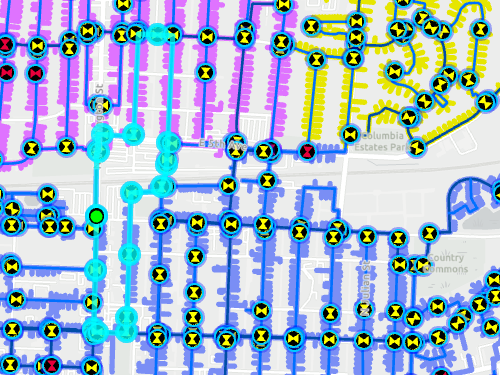 |
Title | Edit and validate subnetworks |
| Level | Intermediate | |
| Type | Tutorial | |
| Description | Move a neighborhood from one pressure zone to another. |
This article shows examples of the most common types of subnetwork errors for electrical networks and how to resolve them.
 |
Title | Managing Electric Networks: Updating Subnetworks |
| Level | Intermediate | |
| Type | Article | |
| Description | Learn how to use the Electric Utility Network foundation to update subnetworks and resolve subnetwork errors discovered during this process. |
Quality assurance
Not every data quality problem creates a topology or subnetwork error. The next tutorial shows you how to use subnetworks to perform quality assurance on your network data. You will see how the utility network allows you to quickly identify and resolve issues that were previously difficult to detect. This information is important for any utility network users who will be responsible for performing quality assurance on the data to ensure that all features are connected and traceable.
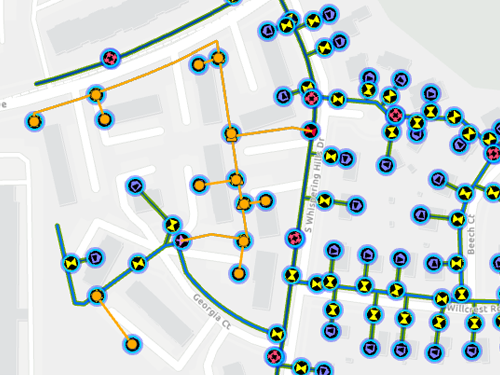 |
Title | Perform quality assurance on subnetworks |
| Level | Intermediate | |
| Type | Tutorial | |
| Description | Connect features to a subnetwork by editing vertices and modify terminal connections. |
The following article shows the most common types of quality assurance performed on electric data using subnetworks.
 |
Title | Managing Electric Networks: Data Quality Assurance |
| Level | Intermediate | |
| Type | Article | |
| Description | This blog shows important data quality assurance techniques for electric networks using the ArcGIS Utility Network. |
Creating subnetworks
The first set of tutorials shows how to create a subnetwork in a utility network and how a subnetwork is represented in your data after it has been created. This information is important for more advanced editors or users who are responsible for creating subnetworks during an implementation.
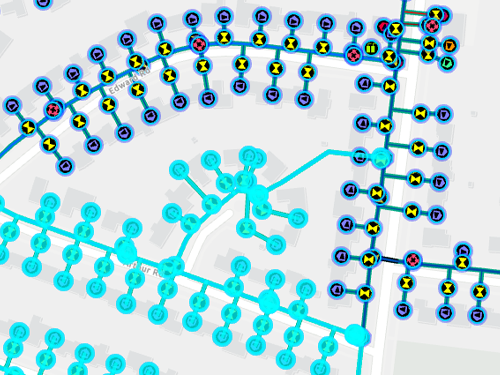 |
Title | Create and manage subnetworks |
| Level | Intermediate | |
| Type | Tutorial | |
| Description | Expand a water system subnetwork by adding a new subnetwork controller. |
The following article shows the process for electrical networks along with how subnetworks are typically defined for distribution, transmission, and generation networks.
 |
Title | Creating Electric Subnetworks |
| Level | Intermediate | |
| Type | Article | |
| Description | In this blog we will show you how you can use ArcGIS to create and manage your transmission, distribution, and secondary networks. |
Subnetwork management
The section cover advanced concepts of subnetwork management and are important for customers who want to develop or extend their own models. Before you create new tiers in your utility network you need to have a strong understanding of state management, edit modes/eventing, and the effects these configurations have on performance and your editing workflows.
The first article discusses the workflows associated with creating, updating, and even deleting subnetworks. Most users are familiar with the process for editing and updating subnetworks, but it is important for super-users and administrators to be familiar with the process of creating as well as the multi-step process required for deleting subnetworks.
 |
Title | The lifecycle of subnetworks in Utility Network |
| Level | Intermediate | |
| Type | Article | |
| Description | This article demonstrates the lifecycle of a subnetwork from its inception through updating, exporting, and finally deleting the subnetwork. |
The next article describes how the status field is used to identify the current state of a subnetwork along with why some models disable management of the status field on certain tiers in their model for performance reasons.
 |
Title | Understanding Subnetworks: Status |
| Level | Advanced | |
| Type | Article | |
| Description | This article describes how the utility network manages the status field on subnetworks to determine whether a subnetwork is clean, dirty, or invalid. |
The next article discusses the behavior of the edit mode parameter on the subnetwork definition. This easily overlooked parameter can have a large impact on performance and usability of the system, so it’s worth understanding this setting and determining the right combination of settings for your workflows.
 |
Title | Understanding Subnetworks: Events |
| Level | Advanced | |
| Type | Article | |
| Description | This article explores how Update Subnetwork triggers editing events in the geodatabase, and how this can be configured to meet different business requirements. |

Configuration
This chapter contains additional resources useful for administrators and superusers who will be responsible for configuring or maintaining a utility network and the maps and applications it supports.
Configuring maps
Configuring maps to present your utility network to users in desktop, mobile, and web applications is an important part of any project because this is how the majority of your users will interact with and understand the utility network. This information in this section is best suited for users who will be creating new maps for use with the utility network.
This first tutorial teaches you the best practices for creating a map pointing to utility network data. You will take the concepts from this tutorial and apply them to your utility network, incorporating the cartographic requirements of your organization.
 |
Title | Configure a map for ArcGIS Utility Network |
| Level | Beginner | |
| Type | Tutorial | |
| Description | Learn how to build effective maps for viewing and editing a utility network by configuring properties for a subtype group layer. |
This next article shows several tools provided by the ArcGIS Solutions team that can make creating, configuring, and deploying maps containing utility network data easier.
 |
Title | Solution tools to help configure maps for the Utility Network |
| Level | Intermediate | |
| Type | Article | |
| Description | Learn about several important techniques and tools to help you configure and manage map for utility network data. |
ArcGIS Enterprise
The next several articles and videos show the recommended way of deploying a utility network to ArcGIS Enterprise. This includes creating a new geodatabase, publishing services, and configuring maps for use in Desktop, Web, and Mobile applications.
The first article includes videos showing the process for creating and deploying a utility network to a new enterprise geodatabase for use with ArcGIS Enterprise. It also includes steps for registering the database with ArcGIS Enterprise and publishing feature services for use in creating desktop, mobile, and web maps.
 |
Title | Deploying a utility network to ArcGIS Enterprise |
| Level | Intermediate | |
| Type | Video | |
| Description | Learn how to deploy a utility network to an ArcGIS Enterprise environment. |
This next article includes videos showing the best practices for creating maps for use in desktop, mobile, and web maps using the feature services published in the previous article.
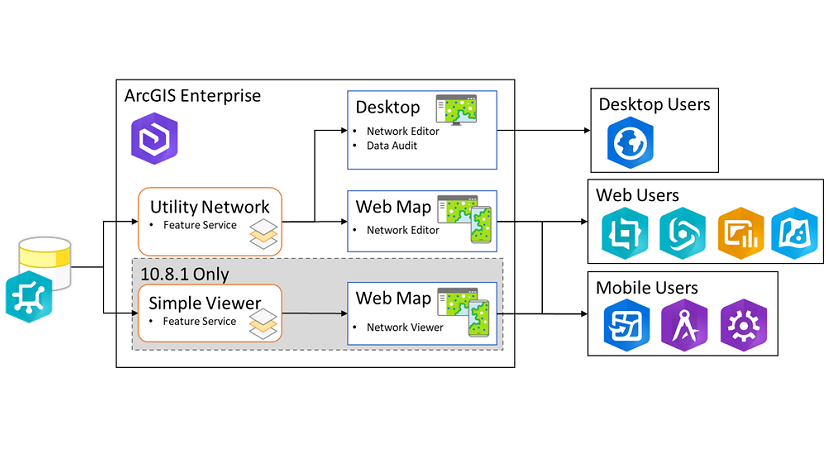 |
Title | Creating and sharing maps for utility network data |
| Level | Intermediate | |
| Type | Video | |
| Description | Learn how to create and share maps for utility network related content in ArcGIS Enterprise. |
Solution tools
Learn about some of the tools provided by the ArcGIS Solutions team to make implementing the utility network easier.
This first article discusses tools that are often used during data migration projects to streamline processes and make data modeling easier.
 |
Title | Solution tools to help with data modeling and data migration |
| Level | Intermediate | |
| Type | Article | |
| Description | Are you looking to do a utility network implementation, and want to know some of the tricks of the trade to make the process easier? Or maybe you have previously implemented a utility network, and are looking for ways to streamline your processes? Either way this article will show you the five most important tools provided by the ArcGIS Solutions team to help with all the configuration and quality assurance that goes into each data migration, many of which you’ve probably never heard of! |
This next presentation includes a demonstration of tools you may find useful during your implementation of your utility network.
| Title | Additional Tools for the Utility Network | |
| Level | Intermediate | |
| Type | Video | |
| Description | This session with walk through the additional tools developed by the Solutions team to enhance your experience with the utility network We will share tips and tricks on how to use the asset package as well as dive into some data migration tools. |
The next page is the online repository you can use to download the latest version of the Utility Data Management Tools along with their supporting documentation.
 |
Title | Utility Data Management Support Tools |
| Level | Intermediate | |
| Type | Documentation | |
| Description | An improved toolset to assist working with the utility network and their maps. |
ArcGIS Workflow Manager
The following webinar shows how you can configure ArcGIS Workflow Manager to help manage editing and quality assurance workflows for the ArcGIS Utility Network. This is not required for implementation, but is something that many utilities are interested in.
| Title | Orchestrating Utility Network Processes with ArcGIS Workflow Manager | |
| Level | Intermediate | |
| Type | Video | |
| Description | In this webinar, Esri experts demonstrate how ArcGIS Workflow Manager works together with ArcGIS Utility Network to streamline branch version management, automate data quality checks, and automate third-party asset management system updates. Presenters also discuss how ArcGIS Workflow Manager can help facilitate the change management processes associated with migrating to ArcGIS Utility Network. |
Administrative best practices
The following pages in the online help are often referred to by administrators when planning upgrades or making configuration changes.
There are certain limitations or steps you must follow when making configuration or schema changes to a utility network dataset. This page describes the most common administrative activities and the requirements or constraints around those tasks.
 |
Title | Utility network management tasks |
| Level | Intermediate | |
| Type | Documentation | |
| Description | Configuration and management tasks within the utility network are dependent on many factors, including the type of workspace connection and its permission level, state of the network topology, and the version being referenced. |
The next page describes the compatibility between ArcGIS Pro, ArcGIS Enterprise, and Utility Network Schema versions. It’s useful for answering questions about backwards compatibility.
 |
Title | Utility network compatibility |
| Level | Intermediate | |
| Type | Documentation | |
| Description | Learn about the components that determine the utility network version compatibility with different ArcGIS Pro and ArcGIS Enterprise releases. |
The next page discussed the features that have been introduced with each new schema version of the utility network. Certain features of the utility network are tied to specific utility network Schema versions. You do not need to upgrade your utility network dataset when you upgrade your ArcGIS Pro or ArcGIS Enterprise release, but this page shows you the features you will not have access to if you keep your utility network at a particular schema version.
 |
Title | Utility network upgrade history |
| Level | Intermediate | |
| Type | Documentation | |
| Description | Learn about what new features are introduced with each new utility network schema version. |

Case studies and user stories
This section contains case studies and user stories from customers who have implemented the utility network.
The following case studies are from electric utilities who have implemented the utility network.
 |
Title | Energy Utility Case Studies eBook |
| Level | Beginner | |
| Type | Article | |
| Description | In this ebook, read success stories about utilities that use ArcGIS Utility Network to enhance data quality, create detailed network models, scale operations, and integrate with enterprise systems. |
This page contains a collection of resources designed for electric utility network customers curated by the electric industry team.
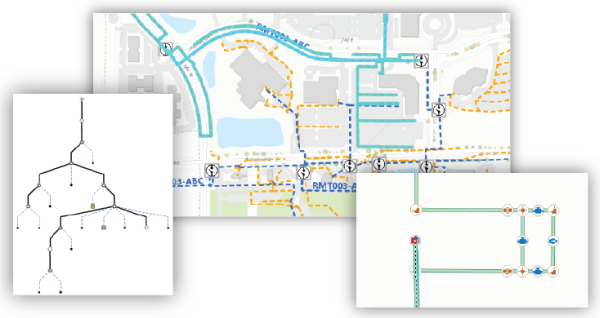 |
Title | Utility Network Resources for Electric Utilities |
| Level | Beginner | |
| Type | Article | |
| Description | This reading list provides a broad overview of the ArcGIS Utility Network and its application for electric utilities. These resources are not exhaustive but will provide a base of information about the capabilities, how they work, why they are important, and how to approach implementation. |
The following story map shows a demonstration of how a utility network can be used to supplement the system reliability calculations required of most distribution utilities through the use of isolation zones/load sections.
 |
Title | System Reliability Story Map |
| Level | Beginner | |
| Type | Case Study | |
| Description | Learn how utilities can use the power of GIS to improve customer reliability by more precisely tracking service interruptions. |



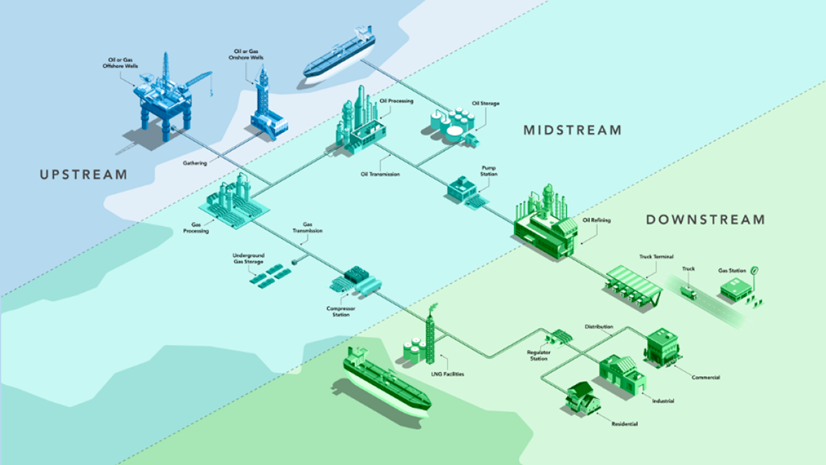

Commenting is not enabled for this article.